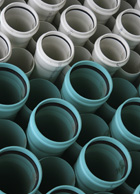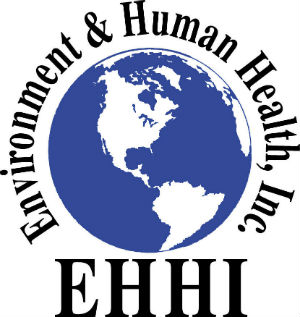LEED-Certification: Press Release
The lead author of this study is John Wargo, Ph.D., professor of Risk Analysis and Environmental Policy at Yale University. Wargo summarized the study, “Although the U.S. Green Building Council’s LEED certification program has effectively encouraged energy efficiency in buildings, tighter buildings often concentrate chemicals released from building materials, cleaning supplies, fuel combustion, pesticides and other hazardous substances.” Wargo continued, “The underlying problem is that thousands of different chemicals, many of them well recognized to be hazardous, are allowed by the federal government to become components of building materials. Very few of these chemicals have been tested to identify their toxicity, environmental fate or the danger they pose to human health. Although the primary stated purposes of the Green Building Council are to promote both energy efficiency and human health, even the Council’s most prestigious Platinum award does little to ensure that hazardous chemicals are kept out of the certified buildings.” 
Dr. Philip Landrigan, Ethel H. Wise Professor and chairman, Department of Preventive Medicine, at Mt. Sinai School of Medicine in New York, reviewed the report and commented, “This is a lucid, well reasoned and balanced critique of the LEED certification process. The authors argue on the basis of carefully assembled scientific data that LEED needs to be amended to better account for the potential health hazards of the toxic chemicals used in modern building materials. Energy efficiency and sustainability are laudable goals and LEED has done much to advance them. But health is important, too, and now it needs to receive careful consideration in building design.”
Dr. Mark Cullen, chief of Internal Medicine at Stanford University Medical School, reviewed the report and concluded, “Dr. Wargo and colleagues warn us now of the potential for green building technologies—even while they bring important energy benefits—to jeopardize the indoor air we breathe, the water we drink and the overall safety of our habitats. This is a timely lesson from a very sage group.”
EHHI discovered that LEED standards have been incorporated into numerous federal, state and local laws by way of legislation, executive orders, resolutions and tax credits.
Many corporations and other institutions also have adopted LEED standards without fully understanding that energy conservation efforts often reduce the exchange of indoor and outdoor air, which can cause synthetic chemicals to concentrate within buildings.
EHHI is especially concerned that the LEED program is now providing the false impression that the buildings it certifies protect human health. LEED’s highest rating, “Platinum,” is attainable without earning any credits for indoor air quality protection.
Dr. Peter Rabinowitz, director of Clinical Services at Yale School of Medicine’s Occupational and Environmental Medicine, said, “This ground-breaking report provides clear and disturbing evidence that a ‘green’ building does not necessarily protect human health. There is an urgent need to include human health in the definition of what it means to be ‘green’ or ‘environmentally responsible,’ and this important report will help policymakers, health care professionals and the public recognize and address this need.”
EHHI is recommending that numerous changes be made to the Green Building Council’s LEED program that will encourage it to become more health protective.
- The Green Building Council (GBC) should simplify the LEED scoring system within categories. Rather than issuing awards of “platinum,” “gold” and so on, the GBC should require performance within each category (health, energy, sites, neighborhoods, etc.) on a 0-100 scale.
- The Green Building Council should expand its board expertise to include people in the area of human health. The board is now dominated by developers, engineers, chemical and materials manufacturers, and architects.
- The government should categorize building products to identify: a) those that contain hazardous compounds; b) those that have been tested and found to be safe; and c) those that have been insufficiently tested, making a determination of hazard or safety impossible. This database should be freely available on the internet.
- The chemical content and country of origin of building materials should be clearly identifiable on building product labels.
- The Green Building Council should support federal efforts to require the testing of chemicals used in many building products for their toxicity, environmental fate and threat to human health.
